Web browser
Supported browsers are:
- Google Chrome;
- Mozilla Firefox;
- Opera;
- Microsoft Edge.
Update your browser to the latest stable version to work better with IoTplot. In other versions or browsers, the system may function incorrectly.
Computer specifications
Computer specifications affects browser operation. The main considerations are CPU and RAM capacity. Multi-core processors do not affect browser operation in most cases. The exception is Google Chrome that can use more than one core in its operation.
Considering the information mentioned above, the minimum requirements are:
- CPU at 1,6 GHz clock rate;
- 512 MB of RAM.
and recommended requirements:
- CPU at 2,4 GHz clock rate (a processor with two and more cores is recommended if Google Chrome is used);
- 2 GB of RAM.
Monitor size and screen resolution should also be considered. The bigger the monitor is, the more data is queried from the server and processed by the CPU. For this reason, the program may work perfectly on a 17-inch screen but start running slow on the 22-inch one. The solution for big monitors is not to use a browser in a full-screen mode. This behavior is more noticeable at lower internet connection speeds.
Internet connection
A 1 Mbit Internet connection channel is enough for the normal operation of IoTplot on one computer. If more than one operator will work simultaneously, do a speed test, and if you notice lag or performance issues.
Your IP address should not be changed within a session.
Optimization measures
Here are some tips, which will help you to improve IoTplot performance in cases when more than a hundred units are connected.
Web browser
Web browser plays a very important role. Use only the browsers specified in the list of supported browsers. Google Chrome is the most efficient one, followed by Firefox and Opera. The slowest, according to our tests, is Internet Explorer.
The performance of the monitoring system strongly depends on the event system of the browser used. Each browser has its individual event model. As the tracking system is dynamic and tracks change with up to a 2-second delay, some browsers (for instance, Internet Explorer) cannot process such a large quantity of events. The solution here is to use a more powerful computer.
Graphics & tooltips
The display of graphic elements on the map and in various lists is resource-consuming. If you notice that your browser is getting slower, try to disable the display of the following elements: units, geofences, places, tracks, as well as names, direction arrows, and ‘tails’ for units (these elements can be disabled with the help of the three corresponding buttons in the Visible layers menu). Limit the number of units displayed on the Monitoring tab. Limit the number of other objects displayed on other tabs that are frequently used (apply the filter to do that). Enable only those elements that are required for your work at the moment.
The optimal settings for unit display can be adjusted in the Unit visualization on map section of the General settings tab. Besides, if the speed of the Internet connection allows it and there are no restrictions on traffic, geofences can be drawn not in the browser, but on the server. This option is enabled in the user settings on the General settings tab in the Other items on map section.
Tooltips and additional information about the unit should also be considered. In the Show additional information about units section of the user setting, it is recommended to turn off the parameters that are not used (if necessary, switch off all the parameters). If there are a lot of geofences or geofences composed of multiple points and the Presence in geofences option is enabled, your browser can become overloaded. In such a case, make sure this option is disabled.
If the Internet connection is slow or you need to save the traffic, disable geofence rendering on the server. Also, when you use reports with a map, messages, and tracks clear your request when it is no longer useful.
Queries to server
When IoTplot starts, not all the data is loaded at once. This is intended to speed up the loading and operation. Some actions that are performed for the first time may take more time initially.
